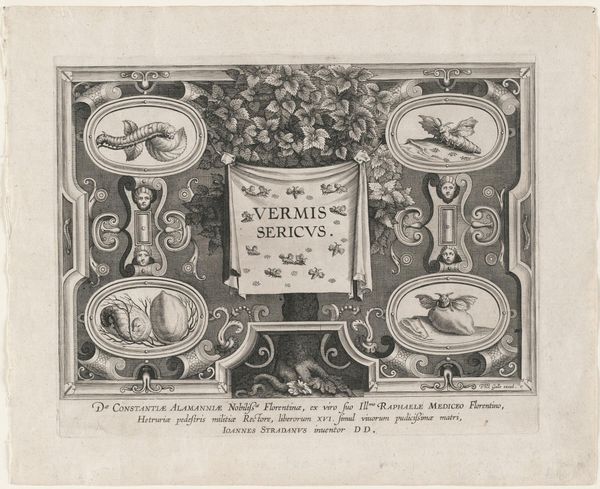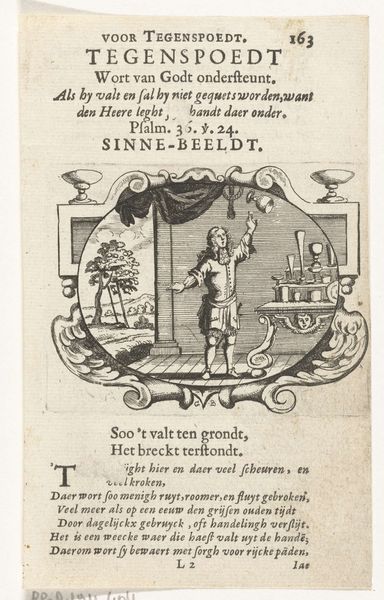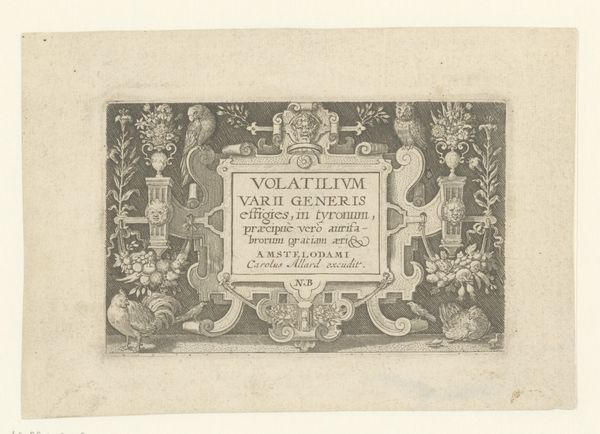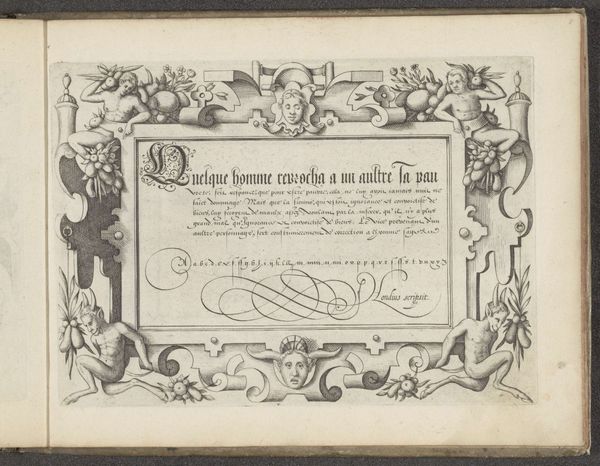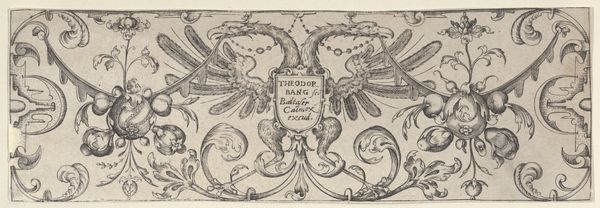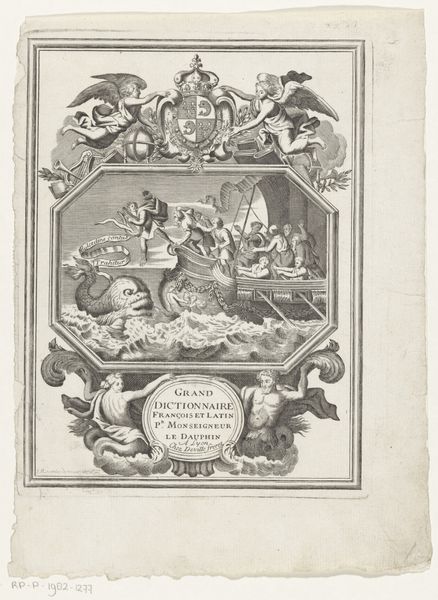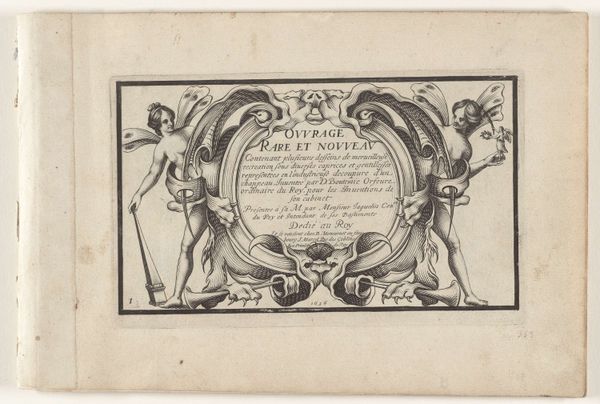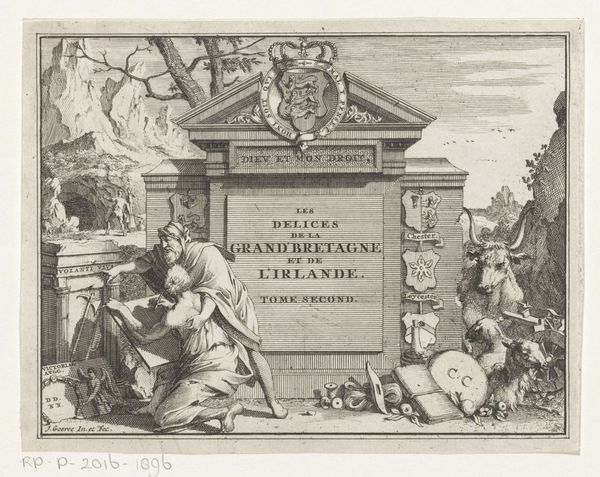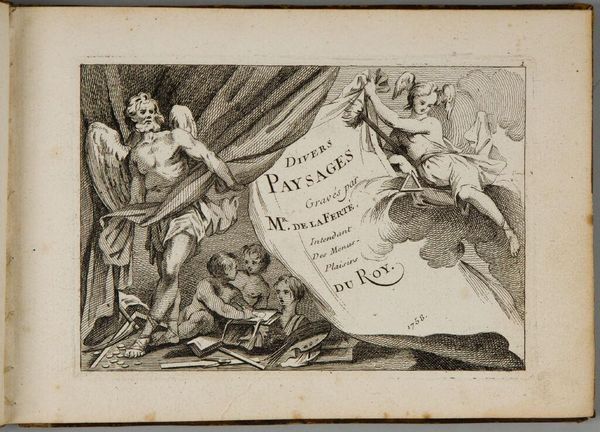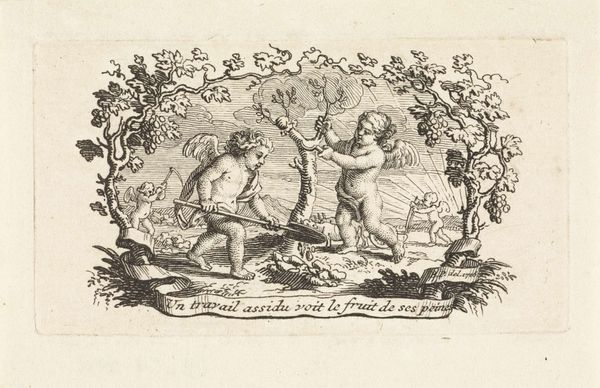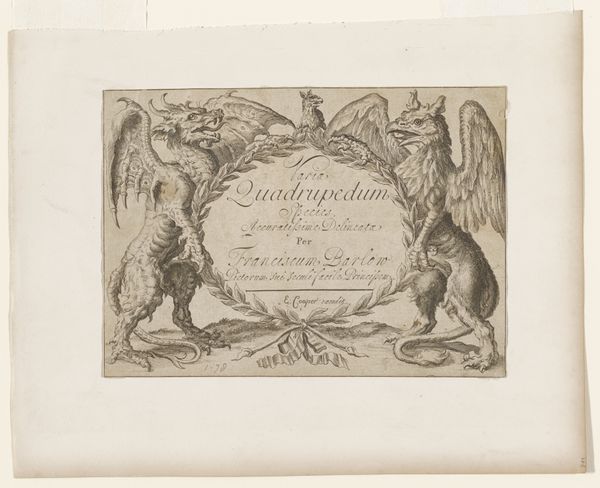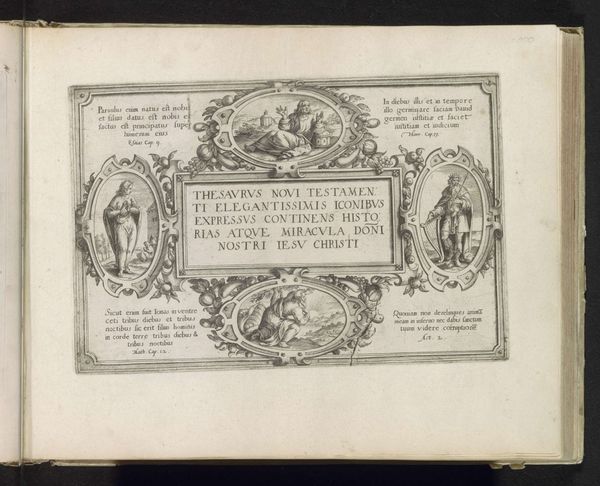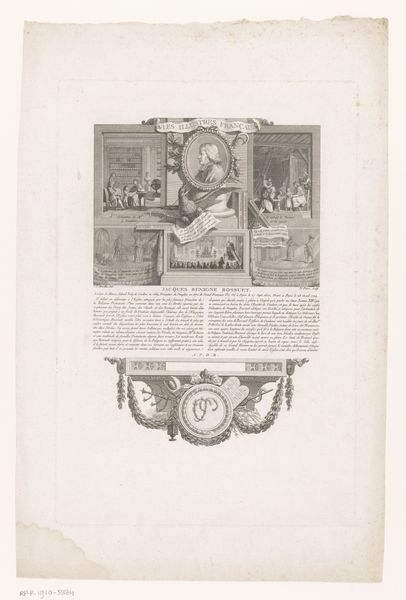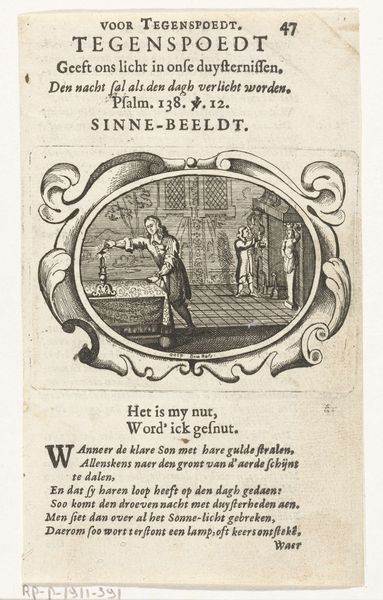
drawing, print, ink, engraving
#
portrait
#
drawing
#
allegory
#
baroque
#
pen drawing
# print
#
pen illustration
#
old engraving style
#
figuration
#
ink
#
pen-ink sketch
#
line
#
pen work
#
engraving
Dimensions: height 122 mm, width 167 mm
Copyright: Rijks Museum: Open Domain
Curator: Gerrit Visscher created this pen and ink drawing and engraving, sometime between 1690 and 1710, titled “Fame and Various Putti Showing a Sheet with a Title”. It’s a beautiful example of Baroque printmaking. Editor: My immediate impression is one of lighthearted celebration. Despite the monochrome palette, the swirling composition and cherubic figures create a sense of joy and movement. Curator: Absolutely. The putti, or cherubs, embody playful creativity and skill. Note how one is diligently writing, another seems to be lost in contemplation and another holds a mirror to truth while Fame, she blows her trumpet. The allegory sings! It’s practically an advertisement. Editor: Exactly. This piece likely served a very specific purpose in its time: announcing the publication of Visscher's ornament designs. Printmaking held incredible power in disseminating styles and influencing taste, effectively democratizing art. We can see it at work here! Curator: That's a vital point. These aren’t merely decorations; they represent accessible designs for artisans, influencing everything from furniture to architecture. But I am especially drawn to how the "new ornaments" reference suggests broader shifts in taste, from more somber sensibilities towards a lighter aesthetic. Editor: What I find compelling is that while this piece aimed for a certain "newness", it firmly relies on classical iconography – the Fame figure, the putti – creating continuity. How radical was it really? Is novelty in the arts always an evolutionary process, slowly and always taking something old into something new? Curator: Indeed, the new ornaments have classical roots and are then being reinterpreted through a Dutch lens, thus building upon an established cultural tradition. By employing familiar visual cues, Visscher cleverly bridged the gap between old and new. The use of these mythological symbols also elevates the designs in the consumer's eye. Editor: And that act of elevating the craft solidifies its presence in the culture! Overall, observing this image, I think it serves as an enduring testament to the power of visual language. It shaped how ideas, styles, and innovations were received and assimilated by society. Curator: Well put! The artwork offers us a tiny window into the aesthetic and intellectual currents of late 17th-century Amsterdam and reveals how even something as seemingly small as ornament can reflect significant cultural shifts.
Comments
No comments
Be the first to comment and join the conversation on the ultimate creative platform.
